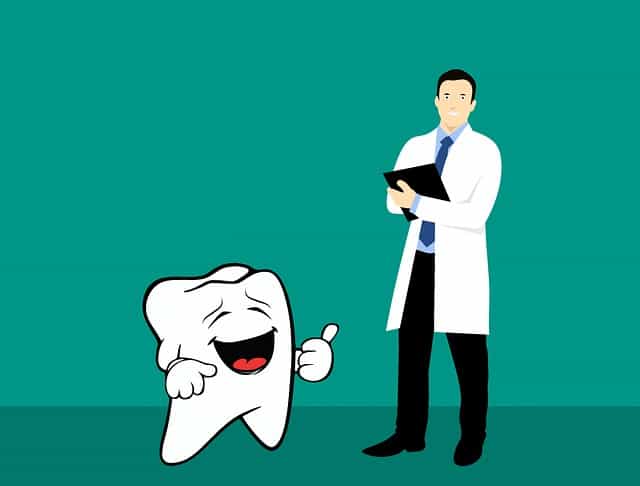What is the best age for my child to see an Orthodontist? As a parent, you want your child to grow up with a healthy set of teeth and gums that allow them to feel confident about their appearance. While people often associate orthodontic treatment with teens, you need to know that your child needs to see the orthodontist long before they hit their teenage years. Many of the issues that affect teeth and bite alignment begin early in childhood, and early detection of problems such as crowding allow you to prevent orthodontic issues from getting worse.
Know When to Schedule the Initial Visit
Ideally, children should have their first visit to the orthodontist no later than their seventh birthday. While this may seem exceptionally early considering your child likely still has baby teeth. It is a critical time when your child’s teeth and jawbone are still in the early stages of growth. This allows the orthodontist to either prescribe early intervention treatments to slow down the progression of problems, or they can give you recommendations for a future treatment plan. Either way, identifying issues at the age of seven gives you more time to prepare to correct problem areas your child’s mouth as they continue to grow up.
Prepare Your Child to See an Orthodontist
Children between the ages of six and seven are capable of understanding the importance of visiting the orthodontist. However, they may be nervous about their upcoming appointment. Help ease your child’s anxiety by talking about the things that the orthodontist does to evaluate the health of their mouth. For instance, the orthodontist will perform a visual exam of your child’s teeth and jaw alignment that may involve having your child open and close their mouth several times. Orthodontists also use x-rays to get a better look at how the teeth fit together in the mouth. As your child’s appointment draws near, you can role play some of these activities together. This gives them more confidence when they sit in the examination chair.
Understand the Benefits of Early Evaluations
Early orthodontic evaluations serve several purposes. First, your child’s orthodontist may identify behavioral or lifestyle factors that are correctable now to prevent future issues from developing. For instance, the orthodontist may see that your child’s thumbsucking habit is causing their teeth to move forward. Finding this out now allows you to intervene before buck teeth begin to develop. Depending upon what is found during the evaluation, your child may also be eligible for treatments even at this early age that have a beneficial effect upon their overall oral development.
Treat Developing Problems Early
Early orthodontic treatment is sometimes necessary to improve a child’s mouth. For instance, a palatial expander may be used at this age. This is to create more space for the permanent teeth to come in. Doing this type of treatment early allows for the orthodontic appliance to work with your child’s normal growth patterns so that progress occurs more efficiently. Making sure that the permanent teeth are able to grow into the correct places also prevents your child from needing more extensive orthodontic treatment later on.
If you are worried about how your child will wear braces when they are currently losing their primary teeth, then don’t be. Orthodontists are used to helping children through each stage of their oral development. They can use strategies such as only putting braces on the four front teeth to close gaps in this area.
Watch For Signs of Orthodontic Problems
You should be aware that some children develop new orthodontic issues as their teeth grow in. For instance, an adult tooth may never emerge, or it could come in severely crooked. As your child continues to develop, watch for signs that they may need another orthodontic visit before they hit their teens. Children who have visibly crooked teeth or complain about trouble chewing their food may need another evaluation.
Plan for a Second Evaluation In the Early Teens
There are certain orthodontic conditions that cannot be corrected until the majority of your child’s permanent teeth have grown in. For instance, prominent front teeth, or buck teeth, are usually not correctable until the age of 10. This is when the top four bottom and top teeth have emerged. If your child has severely misaligned teeth, then they may need further evaluation between the ages of 12 and 15 when the orthodontist can have a better understanding of how their teeth and jawbone will mature into adulthood. At this age, your child is also able to give more feedback regarding issues such as discomfort as they eat or clicking noises when they yawn that tell the orthodontist more about the state of their bite alignment.
Make Sure to Follow Through With the Treatment Plan
A multi-stage treatment plan that begins in early childhood gives your child the best opportunity to have a beautiful smile. However, long-term orthodontic care requires both you and your child to a commitment of following the treatment plan. After your child’s first visit around the age of seven, make sure to inquire about the next stage of their treatment. For instance, take your child to see an Orthodontist and he or she may recommend a treatment such as braces right away. Or they may take a wait-and-see stance. Either way, make sure to keep track of the next date for your visit to the orthodontist so that your child does not experience a delay in their orthodontic care.
https://www.youtube.com/watch?v=yOKaNiPtq0c
Here’s the Kicker
Is your child near the age where they should see the orthodontist. Do you have concerns about your older child’s teeth? Give Dr. Papandreas a call to schedule your child’s first initial consultation today and find out the best age for your child to see an Orthodontist
Like what you read? Comment below or CLICK on an APP LOGO on the screen to follow us and join in the conversation
North Royalton Location
14200 Ridge Rd
North Royalton, OH 44133
tel: 440-582-8585
Best Age for My Child to See an Orthodontist (ANSWERS HERE)




